Un bassin gelé semble idyllique, jusqu'à ce que vous réalisiez que le couvercle solide a emprisonné des gaz toxiques, privé vos poissons d'oxygène et mis en danger les pompes et les bâches. Autrement dit, apprendre à empêcher un bassin de geler fait toute la différence entre un jardin aquatique sain et une catastrophe hivernale. Vous trouverez ci-dessous six stratégies éprouvées, classées des gadgets prêts à l'emploi aux ajustements de conception permanents, ainsi qu'une courte liste d'erreurs à éviter. Lorsqu'un produit peut vous simplifier la vie, vous découvrirez comment l'équipement solaire de Poposoap offre une protection sans intervention, tout en restant fidèle à la promesse de la marque : une solution sans tracas.
Pourquoi vous devez empêcher votre étang de geler

La glace est belle, mais dangereuse. Une étanchéité parfaite emprisonne le dioxyde de carbone et le sulfure d'hydrogène provenant des feuilles en décomposition, ce qui réduit l'oxygène dissous en dessous des niveaux de sécurité. Une glace épaisse empêche également d'atteindre une pompe bloquée, et les cycles de gel-dégel soudains peuvent fissurer les revêtements. Si vous voulez que tous les poissons, plantes et équipements vous accueillent au printemps, vous devez empêcher le bassin de geler complètement.
Comprendre la science : pourquoi les étangs gèlent
L'eau est plus dense à 4 °C. En dessous, l'eau plus froide remonte à la surface et gèle. Dans les lacs profonds, la couche de glace isole la vie en dessous. Dans un petit bassin de jardin, en revanche, ce couvercle isolant se forme rapidement, tandis que l'oxygène s'épuise tout aussi vite. Votre stratégie hivernale consiste à maintenir au moins un « orifice de respiration » ouvert et à maintenir une circulation douce pour permettre aux gaz de s'échapper.
Méthode 1 : Utiliser un dégivreur ou un chauffage d'étang flottant

Un disque chauffant thermostatique flotte à la surface, maintenant une ouverture de la taille d'une assiette, même lors de longues périodes de froid. Installez un appareil de 300 W dans les bassins de moins de 4 000 L ; augmentez la puissance pour les bassins plus grands.
Avantages : instantané, fiable, peu de complications d'installation.
Inconvénients : ils fonctionnent en continu et ne contribuent pas à la circulation. Attendez-vous à une facture d’énergie importante.
Considérez un appareil de chauffage comme une solution de secours plutôt que comme votre seule défense.
Méthode 2 : Maintenir l'eau en mouvement avec une pompe ou une fontaine

Un panache vertical attire l'eau légèrement plus chaude du fond vers le haut, faisant fondre la glace en formant un beignet de la largeur du jet. Détail crucial : maintenir un débit modéré ; de violentes éclaboussures peuvent refroidir excessivement l'étang.
Simplicité solaire : la fontaine à eau solaire Poposoap produit des sons doux ou bouillonnants, alimentés entièrement par la lumière du jour. Le moteur CC sans balais est immergé à une température d'environ 4 °C, et la cage d'admission ouverte se démonte pour un nettoyage facile avec des gants. L'absence de câble secteur évite les déclenchements de disjoncteur différentiel en cas de pluie.
Conseil de placement : ancrez la fontaine du côté sous le vent afin que le vent dominant ne souffle pas les embruns à l'extérieur de la doublure (une façon courante pour les nouveaux arrivants de vider accidentellement les étangs pendant la nuit).
Méthode 3 : ajouter une pompe à air ou un aérateur

Les bulles d’air diffusées agitent la surface et fournissent de l’oxygène là où les poissons en ont besoin.
- Les jardins raccordés au réseau peuvent utiliser n'importe quelle pompe à membrane linéaire conçue pour l'extérieur.
- Les sites hors réseau bénéficient de l' aérateur solaire de bassin Poposoap . Le panneau alimente un bouillonnement intermittent en hiver, augmentant l'oxygène dès que le soleil apparaît ; pas de rallonges électriques sous la neige. Placez la pierre à air sur une étagère de profondeur moyenne, jamais au point le plus profond, afin de préserver la couche inférieure chaude.
Méthode 4 : Enlever la neige et les débris

Une couche de neige de quinze centimètres bloque la lumière du soleil, qui pourrait autrement faire fondre un trou d'air. Brossez la neige après chaque tempête. De même, arracher les feuilles d'automne avant les premières gelées réduit la charge organique qui pourrit et vole l'oxygène tout l'hiver, rendant ainsi toutes les autres tactiques de cette liste plus efficaces.
Méthode 5 : Couvrir l'étang avec une tente ou un cadre

Construisez une structure de serre légère et recouvrez-la d'une bâche en polyéthylène transparente. L'apport solaire passif maintient l'eau à une température supérieure de 3 à 6 °C et protège les équipements du refroidissement éolien. Prévoyez de petites ouvertures au faîte supérieur pour permettre à l'air humide de s'échapper.
Méthode 6 : Construisez votre étang pour l'hiver

Un bon design est la seule solution que vous installez une fois pour toutes.
- Profondeur d'au moins 75 cm dans les zones atteignant –10 °C et 90 cm là où –20 °C est la norme.
- Les parois abruptes minimisent les plateaux peu profonds qui gèlent solidement et découragent les prédateurs qui pataugent.
- Un puisard profond dédié offre aux carpes koï un refuge thermique.
- Un drain de fond alimentant un préfiltre permet de faire circuler un filet d'eau même en janvier sans exposer la pompe principale.
Bonus : Ce qu'il ne faut PAS faire
- Ne pas briser la glace avec un marteau, les ondes de pression peuvent rompre la vessie natatoire des poissons.
- Ne versez pas d’eau bouillante : un choc thermique rapide fissure les revêtements.
- Ne laissez pas couler les cascades, l'eau refroidit excessivement l'étang et peut éclabousser, abaissant ainsi le niveau de l'eau.
- Ne continuez pas à nourrir une fois que les températures restent inférieures à 10 °C ; les granulés non digérés pourrissent et augmentent la concentration d'ammoniac.
Recommandations et réflexions finales sur Poposoap

Si vous avez besoin d'une microcirculation et d'un dégivrage, mais redoutez les factures d'électricité hivernales, optez pour une fontaine solaire Poposoap de 10 à 25 W : puissance naturelle, vaporisation par cloche, aucun coût de fonctionnement. Pour une aération autonome, l' aérateur solaire de bassin Poposoap produit de légères bulles qui préviennent les baisses d'oxygène. Associez l'un ou l'autre appareil à la pompe et au filtre de bassin Poposoap (pré-filtre en acier inoxydable, mousses multicouches et anneaux en biocéramique) pour empêcher les débris de pénétrer dans les pompes et maintenir une nitrification lente, même par temps froid. Tous les modèles sont dotés de coques robustes en ABS et de boîtiers démontables, ce qui vous permet de les entretenir sans avoir à retirer vos gants.
En résumé : maîtriser la prévention du gel dans un bassin ne consiste pas à forcer la chaleur ; il s'agit de combiner intelligemment circulation, oxygénation, isolation et entretien. Choisissez les outils adaptés à votre climat et à votre budget, ajoutez une fontaine à eau solaire Poposoap économe en énergie ou un aérateur de bassin solaire, et vous conserverez un bon échange gazeux tout au long de la saison. Au printemps, vos poissons – et votre portefeuille – vous remercieront.


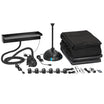
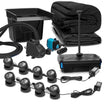
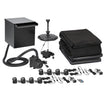
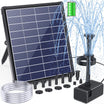
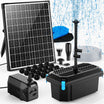
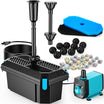
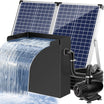
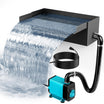

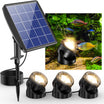


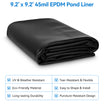
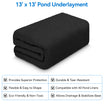

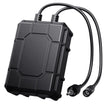
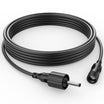
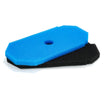

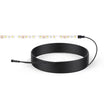



Laisser un commentaire
Tous les commentaires sont modérés avant d'être publiés.
Ce site est protégé par hCaptcha, et la Politique de confidentialité et les Conditions de service de hCaptcha s’appliquent.